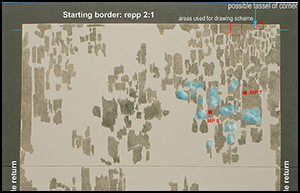Article contents
Missing link: an early wool textile from Pustopolje in Bosnia and Herzegovina
Published online by Cambridge University Press: 24 April 2018
Abstract

In 1990 the excavation of a group of tumuli in south-western Bosnia was published in the pages of Antiquity. The key discovery was the Bronze Age burial of an adult male (Pustopolje tumulus 16), wrapped in a large woollen textile. At the time, little attention was paid to the textile. New analyses of the fabric, however, have led to a reappraisal of this find. The textile is presented here fully for the first time, with details of the analyses that have been undertaken. These reveal that the Pustopolje textile has major significance for our understanding of the early development of weaving technology and clothing in the Bronze Age archaeological record, and in particular it underlines the presence of distinct and separate weaving traditions in Central Europe and Scandinavia.
Information
- Type
- Research
- Information
- Copyright
- Copyright © Antiquity Publications Ltd, 2018
Footnotes
Editor's note: for a glossary of textile terminology, see Zhao et al. in Antiquity 91 (2017): 371–73
References
- 7
- Cited by

